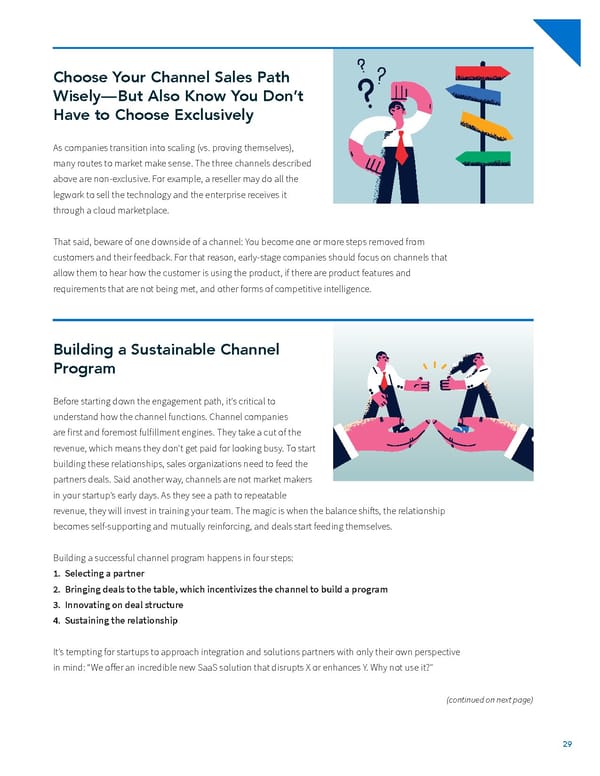Choose Your Channel Sales Path Wisely—But Also Know You Don’t Have to Choose Exclusively As companies transition into scaling (vs. proving themselves), many routes to market make sense. The three channels described above are non-exclusive. For example, a reseller may do all the legwork to sell the technology and the enterprise receives it through a cloud marketplace. That said, beware of one downside of a channel: You become one or more steps removed from customers and their feedback. For that reason, early-stage companies should focus on channels that allow them to hear how the customer is using the product, if there are product features and requirements that are not being met, and other forms of competitive intelligence. Building a Sustainable Channel Program Before starting down the engagement path, it’s critical to understand how the channel functions. Channel companies are ifrst and foremost fulifllment engines. They take a cut of the revenue, which means they don’t get paid for looking busy. To start building these relationships, sales organizations need to feed the partners deals. Said another way, channels are not market makers in your startup’s early days. As they see a path to repeatable revenue, they will invest in training your team. The magic is when the balance shitfs, the relationship becomes self-supporting and mutually reinforcing, and deals start feeding themselves. Building a successful channel program happens in four steps: 1. Selecting a partner 2. Bringing deals to the table, which incentivizes the channel to build a program 3. Innovating on deal structure 4. Sustaining the relationship It’s tempting for startups to approach integration and solutions partners with only their own perspective in mind: “We offer an incredible new SaaS solution that disrupts X or enhances Y. Why not use it?” (continued on next page) 29
 Guide to Breaking into the Enterprise Market Page 28 Page 30
Guide to Breaking into the Enterprise Market Page 28 Page 30